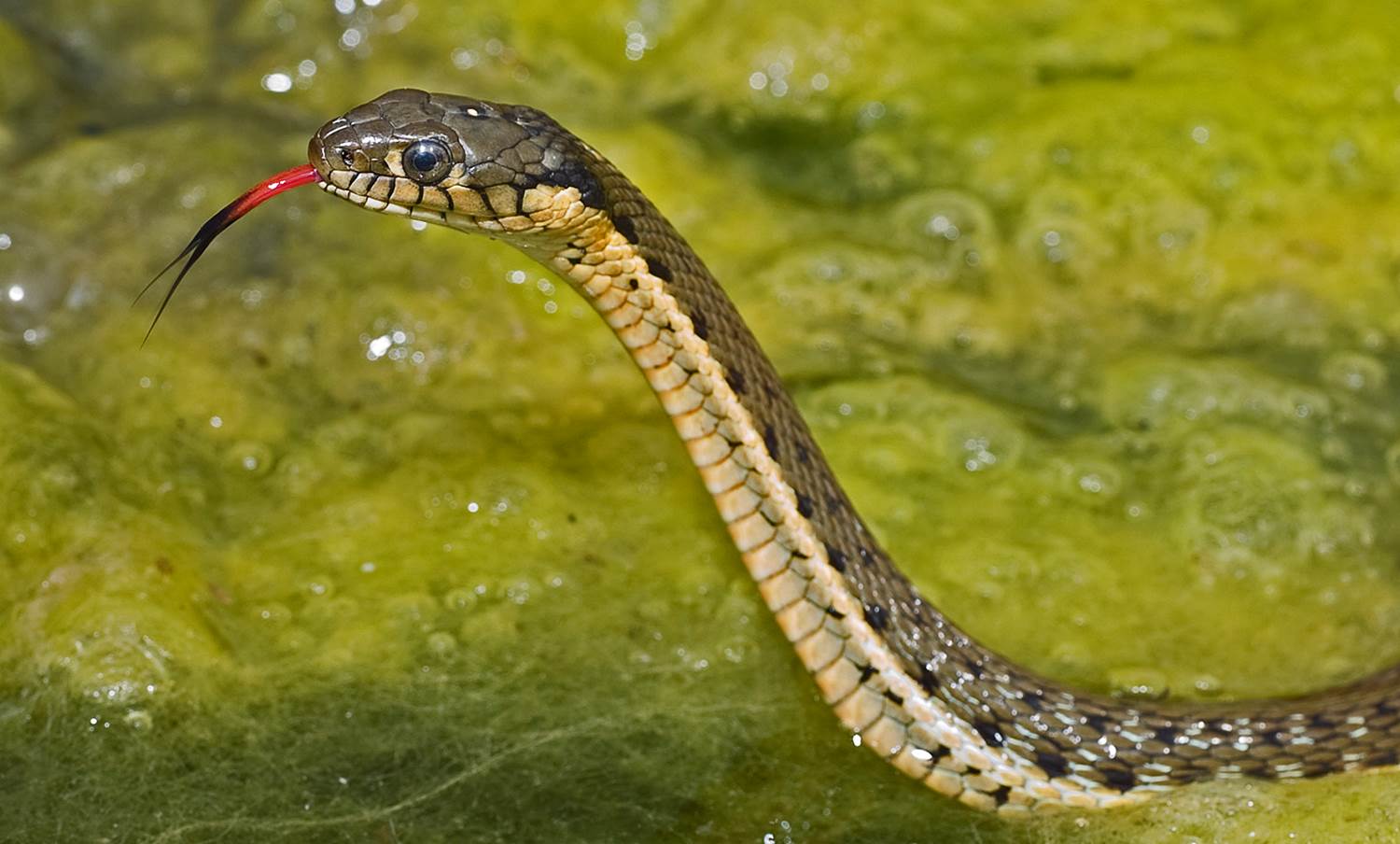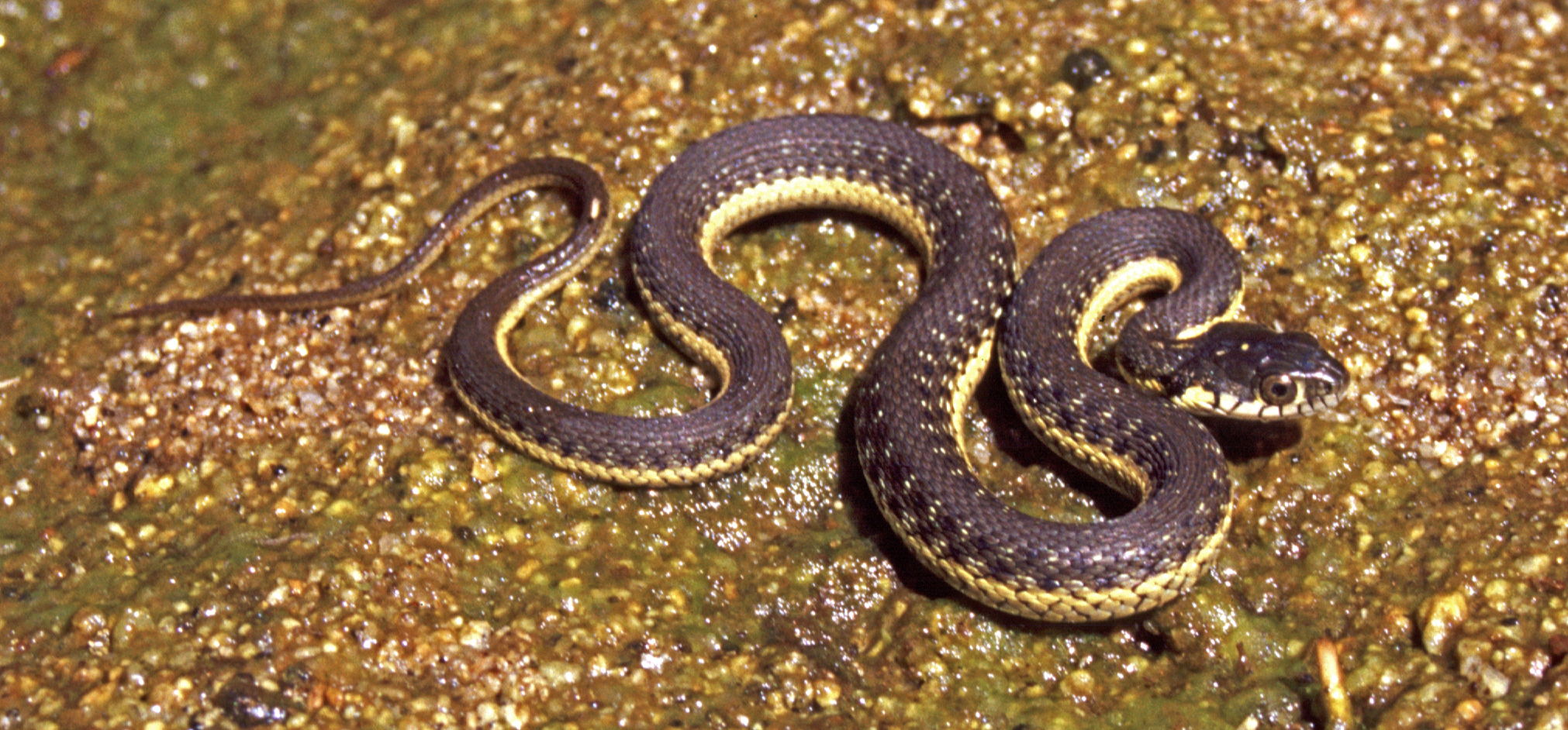
Two-striped Garter Snake
Thamnophis hammondii
Thamnophis hammondii
Photo Credit: Chris Brown, USGS

Two-striped Garter Snake
Thamnophis hammondii
Thamnophis hammondii
Photo Credit: Chris Brown, USGS
| Historically present | |
| Between 2000 and | |
| Last 10 years |
| File name | Lead Author | Year | Type |
|---|---|---|---|
| Amphibian and Reptile Species of Special Concern in California | Jennings, Mark; Hayes, Mark | 1994 | report |
| Amphibian IBI and Hydrological Impact Score | Fisher, Robert N. | 2019 | powerpoint presentation |
| Aquatic Species Quick Reference Guide | other | ||
| Effects of Human Use of NCCP Reserves on Reptile and Mammal Species in San Diego | Reed, Sarah; Larson, Courtney ; Crooks, Kevin | 2019 | report |
| Herpetofaunal Monitoring in MSCP Region of San Diego | Rochester, Carlton; Hathaway, Stacie; Brown, Chris; Pease, K; Fisher, Robert N. | 2001 | report |
| Southern California Herpetofaunal Research and Monitoring (1995-1999): Application to Natural Community Conservation Planning | Case, Ted J.; Fisher, Robert N. | 2000 | field notes/data sheets |
| Two-Striped Gartersnake | Kucera, T. | 2000 | report |
Range is restricted essentially to stream courses in portions of southern California and Baja California, occurring throughout most of the South Coast and Peninsular ranges west of the San Joaquin Valley from the vicinity of Salinas, Monterey County and the southeastern slope of the Diablo Range, south to La Presa, Baja California, Mexico [1;2]. The known elevational range extends from sea level to around 2450 m in Riverside County [3, cited in 4]. Present on Santa Catalina Island in Los Angeles County, California and occurs in several perennial, desert slope streams in San Bernardino County, Riverside County, and San Diego County [5;6;7;8; all cited in 4].
Occurrences within the MSPA have been found in MU 3 (Marron Valley Mitigation Bank, Rancho Jamul Ecological Reserve, Mount Miguel Open Space), MU 4 (San Vicente Reservoir Cornerstone Lands, San Vicente Open Space Preserve, Boulder Oaks Preserve), MU 5 (San Pasqual Valley, Santa Ysabel Creek in Cleveland National Forest, Ramona Grasslands Preserve), MU 6 (Daley Ranch Open Space Preserve, Del Dios Highlands Open Space Preserve, Rancho La Costa HCA), MU 7 (Buena Vista Lagoon ER, San Elijo Lagoon ER), MU 9 (Long Canyon in Cleveland National Forest), MU 10 (Cuyamaca Rancho State Park, Cedar, Boulder, and Temescal Creek and San Diego River in Cleveland National Forest, San Dieguito River Park,Santa Ysabel West Open Space Preserve), and MU 11 (Pine Valley Creek in Cleveland National Forest).
SSC
Associated with perennial and intermittent bodies of water bordered by dense vegetation [8;9; both cited in 4;10]. Also inhabit large sandy riverbeds if a strip of riparian vegetation is present along the stream course. Infrequently found in habitats if flooding, overgrazing, burning, or mechanical alteration removes dense riparian vegetation [4]. Habitat preferences may differ seasonally, utlizing streamside sites in the summer and adjacent coastal sage scrub and upland grasslands sites in the winter [11].
Formerly included in Thamnopolis couchii but elevated to species rank [12, cited in 10].
Emerge from hibernation during the spring [4]. Occassionally observed to forage on warm winter days [11;13]. Diurnal snake [10;14] where activity occurs in the morning and afternoon during summer. Restricts activity to the warm afternoons in the spring and fall and at high elevations [4].
Mating occurs sometime in March [15]. Live young, ranging from 1 to 25, are born during the fall [7;16 both cited in 4;15]. Sexual maturity reached at 2 or 3 years of age. Unknown longevity in field, though may live for 7 to 10 years in captivity [17, cited in 4].
Primarily feed on fish and their eggs, tadpoles and metamorphs of small anurans [8, cited in 4;14]. May also consume earthworms and larval California newts [7;8;18; all cited in 4]. Little information regarding foraging behavior though has been observed to use an 'underwater ambush' method as an additional foraging technique [19] to chasing and lunging at tadpoles erratically [14].
Home ranges vary from approximately 80 m² to over 5,000 m² in summer and from approximately 50 m² to nearly 9,000 m² in the winter [11].
Populations have disappeared from about 40% of historical range in California due to loss of riparian habitat through agricultural practices, habitat modification from livestock grazing, urban development, flood control, predation by introduced bullfrogs, fishes, and feral pigs, and loss of amphibian prey [4].
[1] McGuire, J. A. and L. L. Grismer. 1993. The Taxonomy and Biogeography of Thamnophis hammondii and T. digueti (Reptilia: Squamata: Colubridae) in Baja California, Mexico. Herpetologica, 354-365.
[2] NatureServe. 2017. NatureServe Explorer: An online encyclopedia of life [web application]. Version 7.1.NatureServe, Arlington, Virginia. Available: http://explorer.natureserve.org. Accessed: November 13,2017.
[3] Atsatt, S. R. 1913. The Reptiles of the San Iacinto Area of Southern California.
[4] Jennings, M. R. and M. P. Hayes. 1994. Amphibian and Reptile Species of Sspecial Concern in California. Rancho Cordova, CA: California Department of Fish and Game, Inland Fisheries Division.
[5] Brown, T. W. 1980. The Present Status of the Garter Snake on Santa Catalina Island, California.
[6] Perkins, C. B. 1938. The Snakes of San Diego County with Descriptions and Key. Zoological Society of San Diego.
[7] Stebbins, R.C. 1985. Western Reptiles and Amphibians. The Peterson Field Guide Series, National Audubon Society and National Wildlife Federation.
[8] Fitch, H. 1940. A Biogeographical Study of the Ordinoides Artenkreis Of Garter Snakes (Genus Thamnophis) Vol-44." (1940). Available: krishikosh.egranth.ac.in/handle/1/2053941. Accessed November 13, 2017.
[9] ―. 1941. The Feeding Habits of California Garter Snakes. California Fish and Game 27(2): 1-32.
[10] Kucera, T. 2000. Two-striped Gartersnake. California Wildlife Habitat Relationship Program Staff, eds. California's Wildlife. Vol. I-III. California Department of Fish and Game, Sacramento, California.
[11] Rathbun, G. B., M. R. Jennings, T. G. Murphey, and N. R. Siepel. 1993. Status and Ecology of Sensitive Aquatic Vertebrates in lower San Simeon and Pico Creeks, San Luis Obispo County, California.
[12] Rossman, D. A. and G. R. Stewart. 1985. Taxonomic Reevaluation of Thamnophis couchii (Serpentes: colubridae). No. 61-64. Louisiana State University Press.
[13] Rüthling, P. D. R. 1915. Hibernation of Reptiles in southern California. Copeia, 10-11.
[14] Grismer, L. L. 2002. Amphibians and Reptiles of Baja California, including its Pacific Islands and the Islands in the Sea of Cortes.University of California Press.
[15] Cunningham, J. D. 1959. Reproduction and Food of some California Snakes. Herpetologica 15(1):17-19.
[16] Bogert, C. M. 1930. An Annotated List of the Amphibians and Reptiles of Los Angeles County, California. Bulletin of the Southern California Academy of Sciences (29):3-14.
[17] Von Bloeker Jr, J. C. 1942. Amphibians and Reptiles of the Dunes. Bulletin of the Southern California Academy of Sciences (41): 29-38.
[18] Ervin, E. L. and R. N. Fisher. 2007. Thamnophis hammondii Foraging Behavior. Herpetological Review 38(3): 345-346.